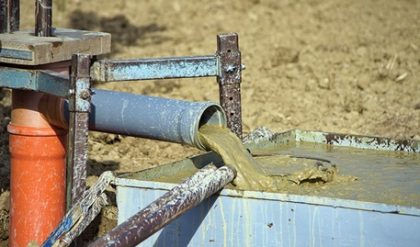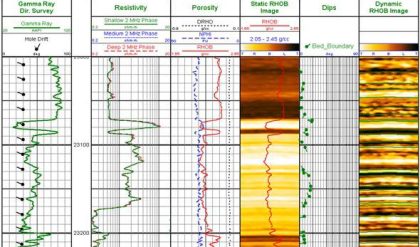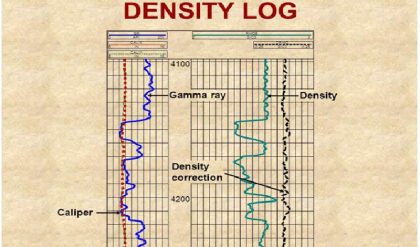Well logging, field technique used in mineral exploration to analyze the geologic formations penetrated by a drill hole. If the hole has been drilled by using coring techniques, the core provides a visual record of the formations and rock types encountered. The description (log) of the core provides the basic data used in geologic analysis, interpretation, and resource calculations.
Core logging is a highly specialized skill requiring careful observation and accurate recording. Geophysical logging of the hole created in the drilling process is sometimes done without the collection of the core. Logging techniques are extremely useful, dependable, and accurate for lithologic identification, formation evaluation, and depositional environment analysis.
For identifying lithologies there are a number of different available logging techniques, tools, and instruments. In some cases a single tool is lowered into the hole and measurements made as a function of depth during the lowering and retrieving process. At other times several instruments are lowered together in the form of a package. Common logging techniques include the following. The spontaneous potential log measures the natural currents developed at lithologic contacts. The natural gamma ray log measures the natural gamma rays emitted by isotopes of uranium, thorium, and potassium. Bulk density can be determined by using either the gamma-gamma or the neutron tool. Acoustic velocity can be measured by a tool that measures the time required for a signal to travel between an in-hole transmitter and receiver. The electrical resistivity of a formation can be measured by determining the current flow between an electrode in the logging tool and another electrode in the ground at the surface. The later log measures the electrical conductivity of a bed. Borehole cameras are sometimes used as part of the logging process.
Core sampling
Core sampling, technique used in underground or undersea exploration and prospecting. A core sample is a roughly cylindrical piece of subsurface material removed by a special drill and brought to the surface for examination. Such a sample is needed to ascertain bulk properties of underground rock, such as its porosity and permeability, or to investigate the peculiar features of a given zone of strata (e.g., to compare strata at a given level with those known to bear oil or gas).
A further purpose of employing coring devices is to recover samples of the several layers of fine-grained deposits on the seafloor in such a way as to preserve the depositional sequence. By studying the contained mineral grains, microfossils, and interstitial water (water in the pore spaces), scientists have been able to infer the depositional history and past oceanic events. In an additional application of core sampling, polar ice sheets have been penetrated to secure information about the age and rate of accumulation of the ice.
Coring tools are long metal cylinders. These may be forced beneath the surface, or sediments may be drawn into them by means of suction.





